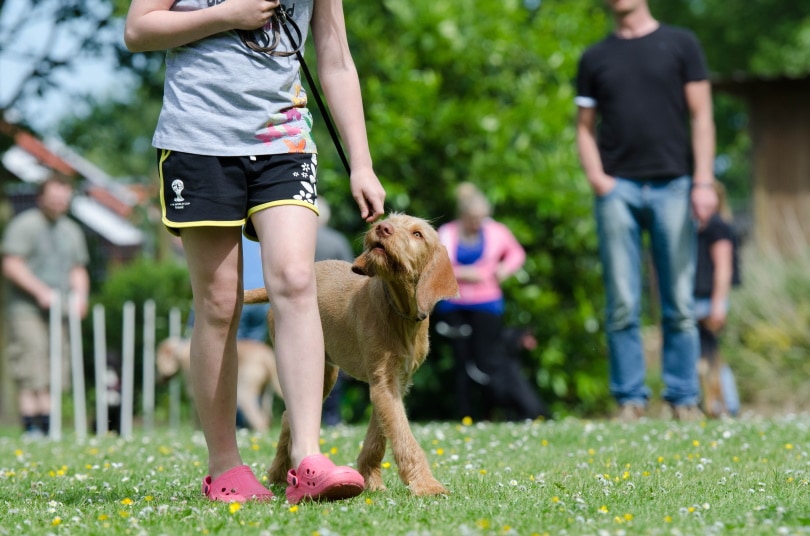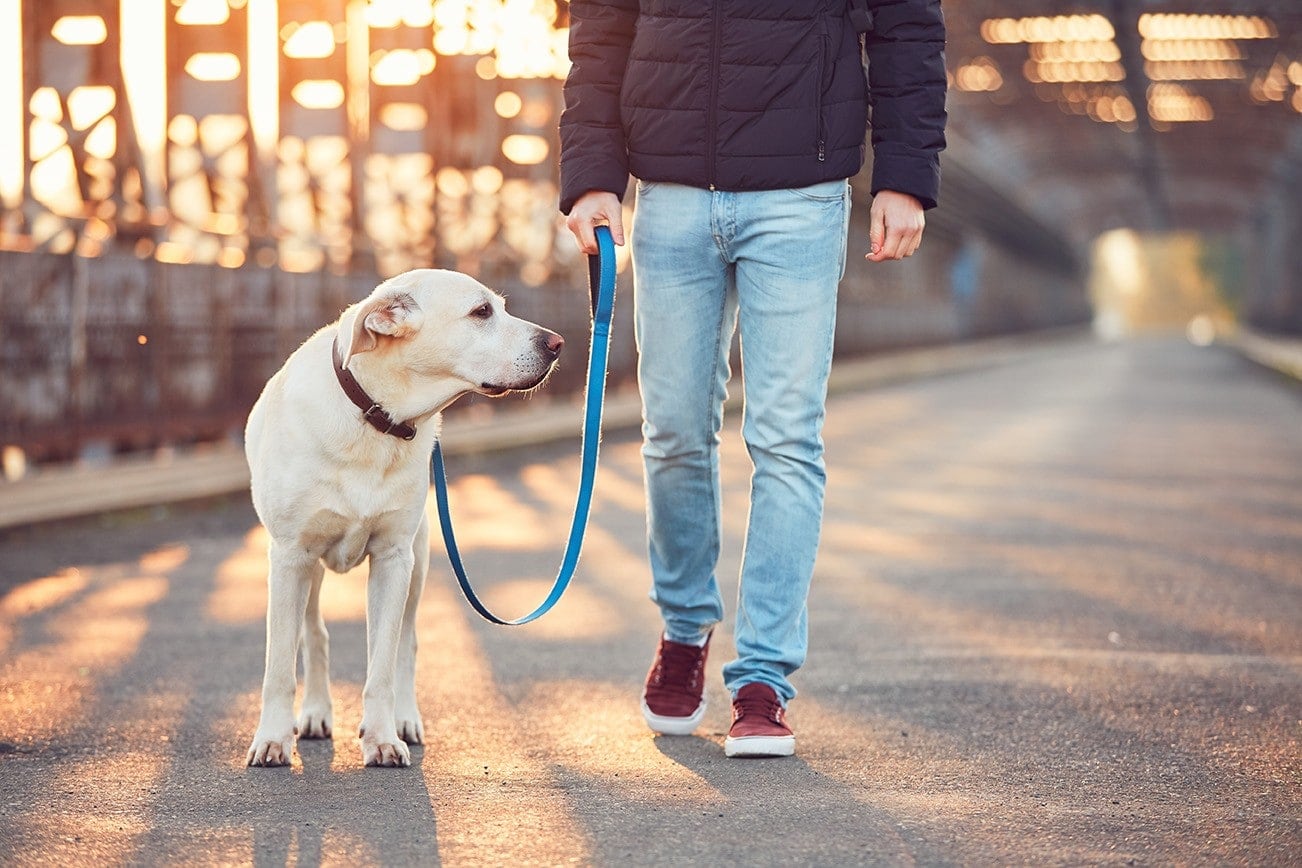How To Teach a Dog To Heel in 7 Simple Steps
Updated on

If you dread your dog’s daily walks because of the constant leash pulling, we have a solution to your problem! Why not teach your dog how to heel or walk calmly at your side without pulling? If you’ve thought about teaching this command but aren’t sure where to start, this article is for you.
We’ll show you how to teach a dog to heel in 7 simple steps. With some patience, treats, and consistency, you can turn walking your dog from a full-body workout to a pleasant stroll. Keep reading to find out how.
Before You Begin
When teaching any new command, you should start in a quiet space, free of distractions, such as a garage or closed room in your house. As your dog starts getting the hang of the heel command, you can gradually start working in more distractions, training in the yard, and eventually going on walks around other pets and people.
Since you’ll be using treat rewards, you don’t want to train your dog when they aren’t hungry, so don’t schedule training sessions right after a full meal. If your dog is very energetic, you may want to have them get some exercise first to help them focus on training.
You won’t need a lot of supplies to teach your dog to heel, but the following items are required:
- Treats
- Collar and leash
- Clicker (optional)
How To Teach a Dog To Heel in 7 Simple Steps
1. Introduce the Behavior

Start your heel training indoors in a quiet location with or without a loose leash. Traditionally, dogs have been taught to walk on the owner’s left side when heeling, but it’s up to you which side you prefer.
Once you know which side you want your dog to heel on, hold a treat in your hand and show it to your dog. Then, hold the hand with the treat against your side, luring your dog around to stand in their heel spot.
As they reach the right spot, mark the behavior by saying “Yes” or clicking if you’re doing clicker training. Then reward your dog with a treat. If you’re using a leash, don’t pull on it to get your dog to the heel spot. You want them to get there with rewards instead of force.
Continue to practice this behavior until your dog reliably moves to the heel spot when directed.
2. Introduce the Command
Once your dog understands that they must move to your side when indicated, begin introducing the heel command. Say “heel” as you lure your dog to your side and reward them when they obey.
Practice this behavior until your dog moves to heel when you say the command, without needing to be lured with a treat.
3. Start Moving

Once your dog has connected the command heel with the behavior of coming to your side, it’s time to start moving. Your dog now needs to learn to walk with you while remaining in the heel position. Start slowly, moving just a step at a time.
With your dog at your side, give the heel command and take one step forward. Give your dog a treat as they move forward with you. If they don’t seem to get it, step back and repeat the command and movement, possibly using the treat to lure them forward if needed.
Gradually increase your number of steps before giving the treat until your dog will heel for at least 10 steps.
4. Introduce Direction Changes
Once your dog will heel for 10 steps in a straight line, begin introducing direction changes like turns and stops. Start slowly and walk three steps forward and turn slightly to the right. If your dog moves with you, even just a little, reward them with a treat.
Continue to practice this movement indoors, gradually increasing the complexity of the direction changes until your dog is heeling reliably with no distractions.
5. Teach Your Dog To Sit When You Stop

Part of teaching your dog to heel is guiding it when you stop walking. Good leash manners require your pup not to wander off or pull if you stop to talk to a friend or wait to cross a road. The simplest thing to do is teach your dog to sit down at your heel when you stop walking.
You can fold this step into your heel practice for direction changes. Walk a few steps, stop, and ask your dog to sit. When they do, reward them with a treat.
After doing this a few times, stop and hesitate slightly before giving the verbal sit command. If your dog sits anyway, praise and reward them. Keep practicing until your dog sits reliably every time you stop walking.
6. Add Distractions
Once your dog consistently heels on command without distraction, it’s time to start testing them. That might mean holding some training sessions indoors with other people or pets around. It could mean moving into a secured backyard with fun sights and smells to distract your dog.
You may need to increase the value of the treats you offer to keep your dog’s attention each time you increase the distractions. If you haven’t already been using your dog’s leash and collar for training, you may want to do so at this point before you move on to practicing on walks.
7. Go For a Walk

As the final step in your heel training, leave your house and yard and take a walk. Unfamiliar sights and sounds are the ultimate distraction for your pup, so don’t be surprised if it takes a bit for them to settle in and remember their training. Be patient and use delicious treats!
Start with a short stroll, asking your dog to heel and rewarding them frequently. If your pup is having difficulty focusing, you might need to take a step back and practice in the yard a little more. As your dog gets better at heeling on walks, increase your distance and decrease the tasty food rewards.
As tempting as it might be to have your dog practice off-leash heeling on a walk, make sure you follow all local leash laws. Also, remember that no dog is immune to sudden temptation, and it can be dangerous to have them off-leash near traffic.
In Conclusion
Teaching your dog to heel takes more time and patience than other commands, but following these seven simple steps will give you the confidence to try. All dogs learn at different speeds, so don’t be discouraged if your dog doesn’t pick up this behavior immediately. Keep the experience positive and full of tasty rewards. If you’re frustrated and your dog is struggling, consider enrolling in a training class.
Featured Image Credit: Piqsels














